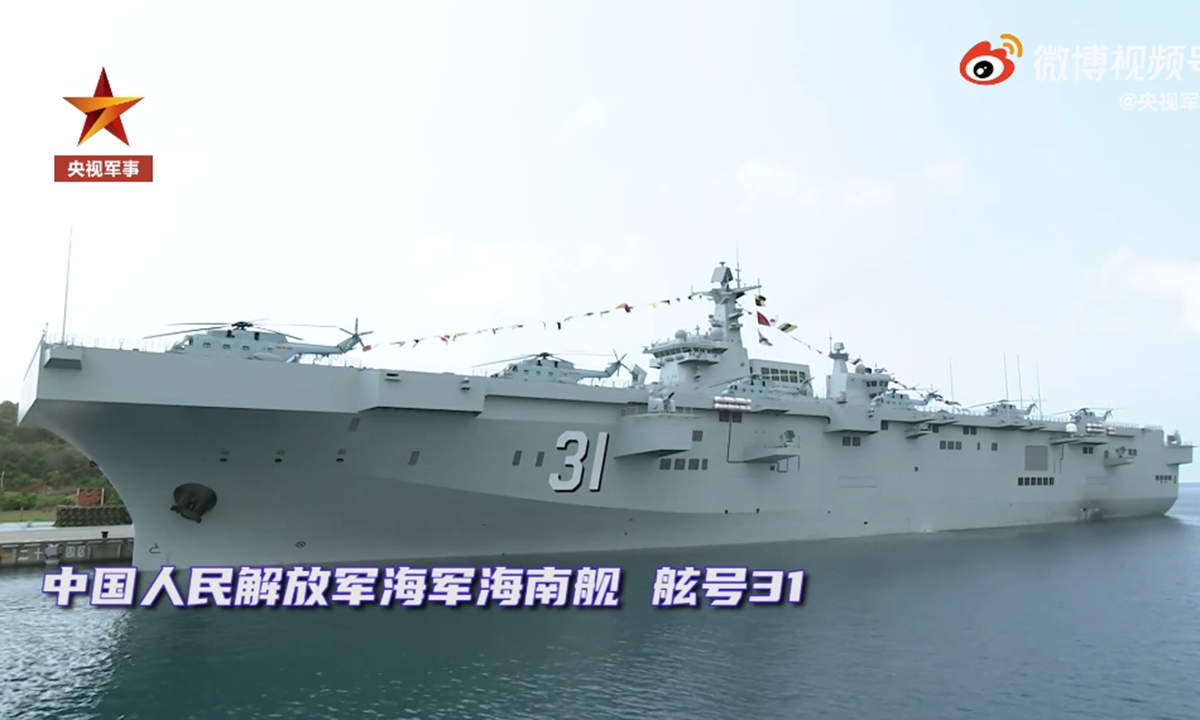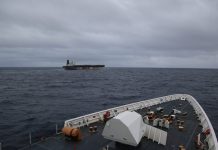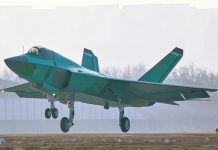By Alan Cunningham
Naval security is a big portion of China’s overall defense platform. Given the fact that China desires to become the strongest power in the Asian-Pacific region and gain control of Taiwan and other important geopolitical areas, it is logical then that it would be so heavily focused on naval defense.
BrahMos-II Missile: How India’s Hypersonic Missile Program Will Get A ‘Big Boost’ From Russian Technology?
Earlier this week, the South China Morning Post reported that Chinese engineers from multiple universities have identified there are “signs that China could be developing a new type of helicopter for its aircraft carriers”.
The engineers, coming from Tianjin University, University of Nottingham Ningbo China, and the University of Illinois Urbana-Champaign, published an article in the American Society of Civil Engineers’ Journal of Aerospace Engineering in August of 2021.
Their article had the intended effect of presenting “modeling and control law design for a bi-tiltrotor unmanned aerial vehicle for autonomous payload delivery” yet this potentially solves a problem China has been experiencing with their tiltrotor helicopters.
China Eying Tiltrotor Helicopters
Even more seriously, it points to China’s potential usage of tiltrotor helicopters onboard their aircraft carriers, which could very seriously affect the West’s geostrategic capabilities. However, these developments are not exactly new.
In July of 2019, the National Interest reported that China was in the process of building “three Type 075 Landing Helicopter Docks (LHDs), essentially moving naval bases that can carry dozens of helicopters and launch amphibious landing craft from their floodable well deck”.

Already, China had “commissioned five smaller 25,000-ton Type 071 Yuzhao-class amphibious transport docks (LPDs), with two more under construction [which] can carry hundreds of troops, with supporting tanks and armored vehicles, and up to four Type 726 air-cushion landing craft (LCACs) to ferry them ashore. Four SA-321 helicopters give the Type 071 a limited vertical lift capacity”.
Given how substantially China has increased their Marine Corps and amphibious ground units, this does pose some security issues for Taiwan as Beijing seems hell-bent on the unification of the self-governing island with the mainland.
Mission Taiwan
While relatively recent analyses by the US Department of Defense (DoD) do not indicate an increased ability for China to conduct amphibious assaults or invasions, the use of tiltrotor aircraft could increase China’s ability to mount combat operations against Taiwan.
Not only this but these tiltrotor helicopters could also be used in combat operations against other adversaries like the Philippines and Japan. The desire for tiltrotor helicopters by the Chinese government and military has long been sought.
China Daily, a news outlet owned by the Chinese Communist Party, discussed this in 2016 noting how China’s state-owned aircraft company, “…are developing the Blue Whale tilt-rotor aircraft, China’s equivalent of the United States’ Bell Boeing V-22 Osprey” which they claimed would “have a maximum takeoff weight of 20 metric tons, and the heavy-duty model 40 tons… fly as fast as 500 km/h”. Ideally, this helicopter would be used in “disaster relief, supply airdrop and search-and-rescue operations”.
In short, it is clear to see that China is developing amphibious ships that have the explicit ability to carry various tiltrotor aircraft and see this sea and aircraft as being of immense national security importance.
Learning From US’ Experience
The United States, on the other hand, has a much tenser relationship with tiltrotors. One of the best examples of this is the Bell Boeing V-22 Osprey aircraft, one of the most notable tiltrotors in US military service. One of the reasons for this notability, however, is due to the aircraft’s many failures.
The V-22 first entered active service in the US military in 2007 after having first flown in 1989. During the aircraft’s entire development, the Osprey was noted for having severe safety and performance issues.
Retired US Marine Corps officer Carlton Meyer documented these multiple issues on his site G2mil, writing that the V-22 was lacking in “all engine inoperative safe landing capability…susceptible to un-commanded rolling…prone to roll [pilot-induced oscillation] in helicopter mode during high gain pilot tasks”.
Meyer further demonstrated that various other issues, such as the aircraft’s susceptibility to “tip vortices” and “high vibratory loads, coupled with a flexible structural design”, made the aircraft incredibly unsuitable for flight and dangerous in performing a variety of essential operations.

Despite these issues, the V-22 Osprey was advanced forward, resulting in various accidents and crashes, both during tests and active combat incidences. In spite of numerous official declarations of safety by various branches of the US military, field grade officers, aerospace professionals, engineers, and private defense contractors detailed extensively in reports, analyses, and other documents that the Osprey had a series of mechanical issues, which resulted in a history “written in blood”.
While redesigns were made on the Osprey, these seemed to fall short. Even after 12 years of service in hot, desert combat zones, it was found in 2019 that Navy officials were still having issues with “keeping sand and soil from being sucked into the engines when the aircraft picks up or drops off personnel on natural terrain”.
Additionally, the overall cost of producing the tiltrotor aircraft is immense; in 2012, it was reported by Popular Mechanics that while the Osprey’s total R&D was intended to cost slightly over $39 billion USD, “independent estimates predict that it will come to $56 billion—43 percent higher. This price tag—about $100 million per plane, including development costs—becomes a bull’s-eye each time politicians look for budget cuts”. This was so immense that, in 2010, the “bipartisan deficit commission proposed termination of the Osprey”.
While China is developing tiltrotors, it is important to take heart that these aircraft have a long history of malfunctions that result in death or injury, excessive cost, and severe performance issues in combat zones and in other essential military and homeland security missions (search-and-rescue, humanitarian, etc.). In a way, China’s continued development of this type of aircraft could be beneficial for the US, the West, and other Western-allied nations like Taiwan and Japan.
China may end up spending large quantities of money and a great deal of time developing these machines which could undermine their strategic goals and benefit their own adversaries. While the global community should naturally be wary of any new military or aerospace innovations occurring in China, it is highly possible that this new aircraft may backfire upon the Chinese government and pose more of a problem than a benefit.
- (Alan Cunningham is pursuing MA in International Relations from Norwich University, USA. He has previously been published in the U.S. Army War College’s War Room and Small Wars Journal). VIEWS PERSONAL
- Follow EurAsian Times on Google News




